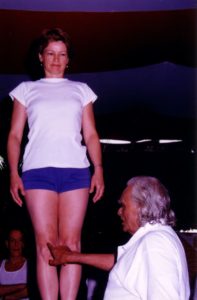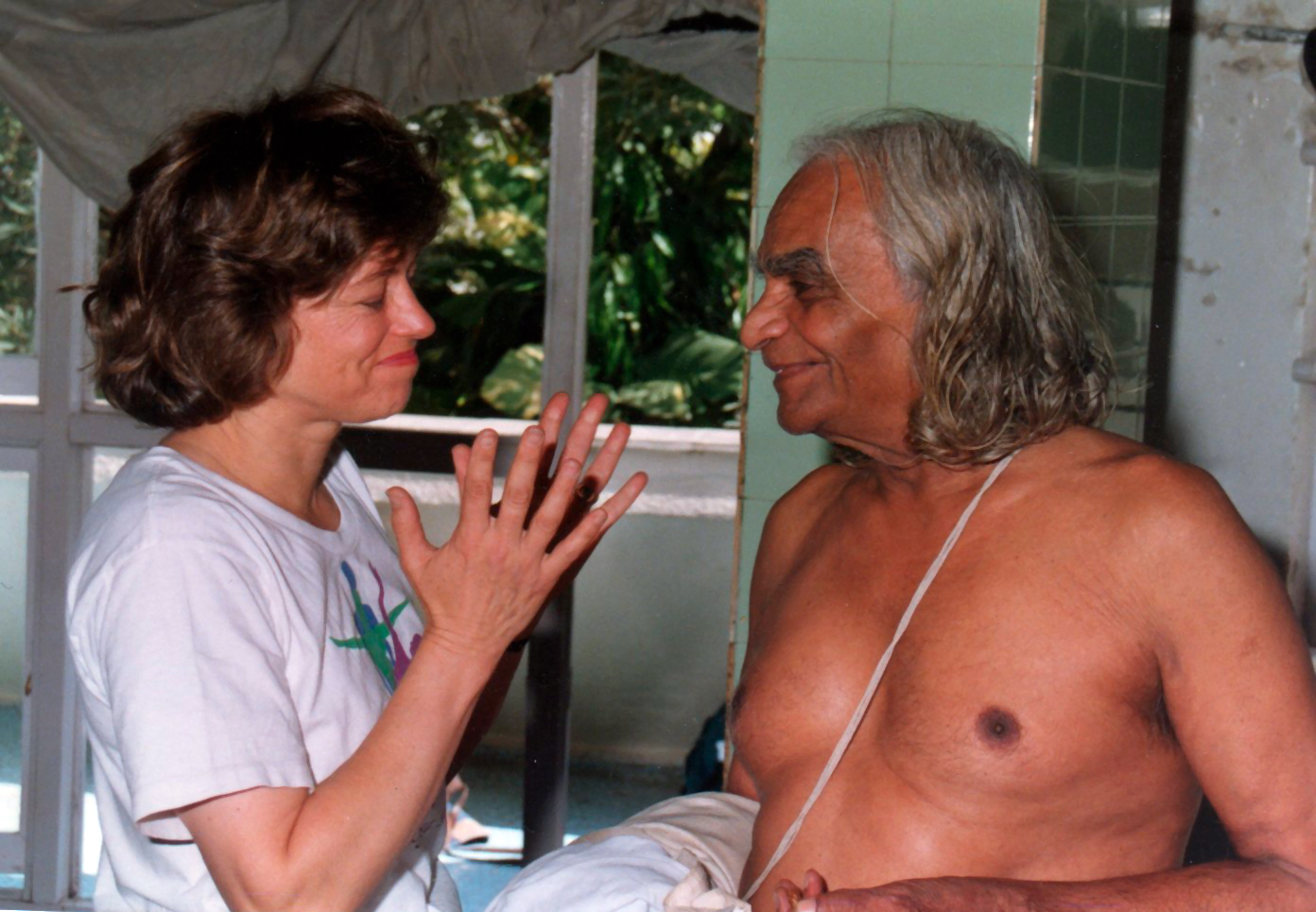by Mary Dunn
Yoga is union, the union of our physical, physiological, psychological, mental, and spiritual parts in self- knowledge and an exploration of self-realization.
This definition is all well and good, but how can physical directions in class, “press the four corners of your feet evenly, release your tongue,” reach beyond exacting ideas of the “correct” way to do a posture to fulfill the promise of this definition?
“I will teach you to stand on your own two feet,” Mr. Iyengar told my mother when she went to India to study with him in 1968, “so you can face whatever challenges life brings.” And we, too, begin our yoga study with the study of standing on our own two feet, not as a child eager to walk in the world, but as seekers in the journey inward towards understanding our bodies, minds, and souls.
 In 1978 when I was in India, Mr. Iyengar told me that he could teach us all of yoga in Tadasana, the mountain pose. The catch was that we could not learn it without the stillness of mind and ability to penetrate our very core that were the great lessons. So the teaching is transmitted using active and quiet postures as vehicles for individual search. Through repetition and guidance in varied postures, practice gradually provides the practitioner with tools to understand and shape mind and character and to rewire connections in our nervous system. Yoga teaches to separate the strands of the mind until habit and self-imposed limitations give way to intelligence, wisdom, and peace. And in our Iyengar tradition, we teachers are on the path of serious study, and we teach from years and decades of experience. We are teaching the unfolding subject of transformation of consciousness in the practical context of Tadasana, Utthita Trikonasana, Sarvangasana and Savasana.
In 1978 when I was in India, Mr. Iyengar told me that he could teach us all of yoga in Tadasana, the mountain pose. The catch was that we could not learn it without the stillness of mind and ability to penetrate our very core that were the great lessons. So the teaching is transmitted using active and quiet postures as vehicles for individual search. Through repetition and guidance in varied postures, practice gradually provides the practitioner with tools to understand and shape mind and character and to rewire connections in our nervous system. Yoga teaches to separate the strands of the mind until habit and self-imposed limitations give way to intelligence, wisdom, and peace. And in our Iyengar tradition, we teachers are on the path of serious study, and we teach from years and decades of experience. We are teaching the unfolding subject of transformation of consciousness in the practical context of Tadasana, Utthita Trikonasana, Sarvangasana and Savasana.
As teachers we guide, and, in class, students ride on the wings of this guidance. But the ultimate guidance for each practitioner is to test of the truth of each word, each experience, and each moment.
It is one thing to be taught, it is another to practice the teaching. Empowerment comes through independent practice. Practice need not be time consuming or arduous. It has to happen, however. As you take the step to stand alone and stand in stillness, the intrinsic value of your practice will call you and make it easier to find time to practice.
The power of this practice is that it is educative—it teaches each of us about who and what we are and who and what we can become. Our practice directs us to use all our power, understanding of ethics, psychological insight, concentration, and spiritual discovery to uncover ourselves and become whole.
From ©IYAGNY Archives

